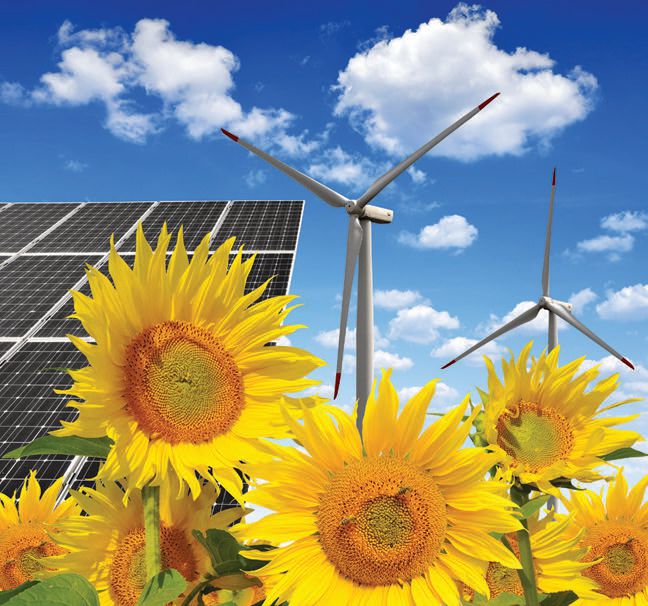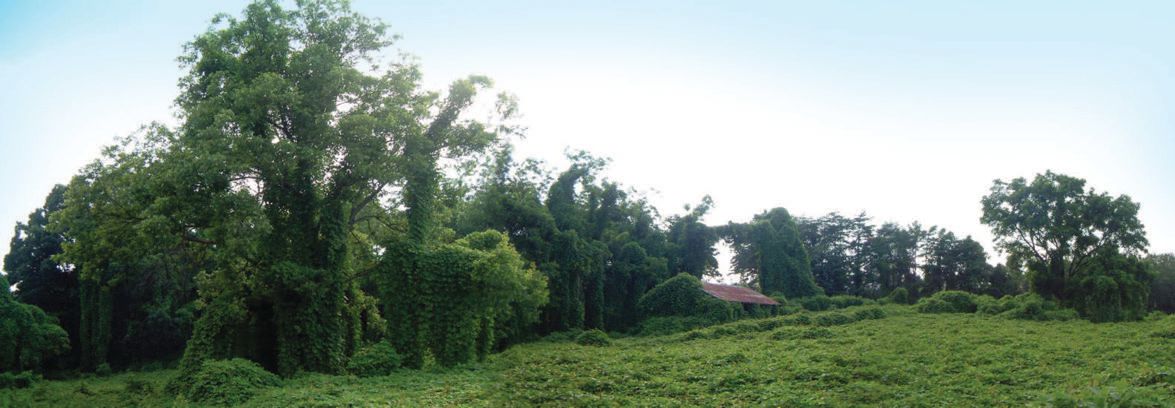Be careful what you ask for
Dr. Robert M. Gresham, Contributing Editor | TLT Commentary September 2016
When Man’s well-intentioned plans bump up against Mother Nature, unintended consequences often are the result.

There is always more than one way to solve a problem, but usually only one solution is truly optimal, and that one is usually driven by economics and sustainability.
© Can Stock Photo Inc. / vencavolrab
ONE OF HUMANITY'S INHERENT WEAKNESSES is that sometimes we are so certain about the veracity of what we think and about the consequences of our enlightened actions, thoughts or deeds. Some of this must come from the belief that we are the highest form of animal and therefore know everything. But of course we don’t.
There are any number of environmental disasters we have created for ourselves (sometimes with the best of intentions) because we acted without properly considering, perhaps due to arrogance, the unintended consequences of our actions. Anyone living in the U.S. South can attest to the insidious nature of kudzu, a plant imported to the U.S. from Japan in 1876 that gained widespread popularity in the 1930s and 1940s to help control erosion. Well, it certainly does that. Kudzu grows really well in the South and has caused problems for many years by over-shading trees and shrubs so much it kills them. Plus it is nearly impossible to get rid of once established. As kids, for a prank, we would plant kudzu in someone’s yard if we didn’t like them. Nice! The picture shows how kudzu, now considered a noxious weed, can cover whole trees and forests.
 Imported to the U.S. from Asia to prevent erosion, kudzu grows so fast that it can kill entire forests by blocking out the sun.
Imported to the U.S. from Asia to prevent erosion, kudzu grows so fast that it can kill entire forests by blocking out the sun.
I’m sure you can come up with some examples of such things in your own experience, such as the pythons infesting Florida and other well-intended assaults on our environment where we thought we were going to improve on nature’s handiwork.
A more recent example is the heavily subsidized wind and solar energy program in Germany. According to a Daily Caller article titled Germany Votes To Abandon Most Green Energy Subsidies by Andrew Follett, an energy and environmental reporter, Germany’s legislature voted July 9 to sharply cut back on subsidies and other financial incentives supporting green energy due to the strain wind and solar power placed on the country’s electricity grid.
The first problem is cost. Germany’s government plans to replace most of the subsidies for local green energy with a system of competitive auctions where the cheapest electricity wins. The average German pays 39 cents per kilowatt-hour for electricity due to intense fiscal support for green energy. The average American only spends 10.4 cents per kilowatt-hour.
Another problem is that Germany’s wind and solar power systems have provided too much power at unpredictable times, which damaged the power grid and made the system vulnerable to blackouts. Grid operators paid companies $548 million to shutter turbines to fix the problem, according to a survey by the business magazine Wirtschaftswoche of Germany’s largest power companies.
The German government plans to cap the total amount of wind energy at 40%-45% of national capacity, according to a report published earlier this month by the German newspaper Berliner Zeitung. Germany will get rid of 6,000 megawatts of wind power by 2019.
And if that weren’t bad enough, despite the cutbacks to wind power, the German government estimates that it will spend more than $1.1 trillion financially supporting wind power, even though building wind turbines hasn’t achieved the government’s goal of actually reducing carbon dioxide (CO
2) emissions to slow global warming.
The amount of money flowing into European green energy from governments and the private sector
collapsed from $132 billion in 2011 to $58 billion last year, according to a May report by a British auditing firm. Green energy’s failure to meet reliability and cost goals were the primary reasons for declining investment. Europe has poured $1.2 trillion into the green energy industry to fight global warming, but its CO
2 emissions and power bills just keep rising.
The enormous German utility Rheinisch-Westfälisches Elektrizitätswerk (RWE) was forced by the government to shut down many of its profitable nuclear reactors and build expensive wind and solar power alternatives. The government’s mandate to replace nuclear reactors with wind or solar power cost more than $1.1 trillion. The company has a 46% chance of going bankrupt within the next two years, according to investment groups.
The massive amount of money Germany poured into green energy is a direct result of the government’s decision to abandon nuclear energy after the Fukushima Daiichi nuclear disaster in Japan galvanized political opposition. Nuclear power made up 29.5% of Germany’s energy in 2000. The share dropped to 17% in 2015, and by 2022 the country intends to have every one of its nuclear plants shut down. This shift caused Germany’s CO
2 emissions to actually rise by 28 million tons each year after Germany’s nuclear policy changed.
Nuclear power’s decline has created an opening for coal power, according to a Voice of America article published in November. Coal now provides 44% of German electricity.
That is quite a shift from altruistic environmental goals to environmental goals driven by harsh economics and the reality of technical limitation.
As I was writing all this, I received a serendipitously and timely email from STLE-member Dr. Mathias Woydt, who also is from Germany. He attached an unpublished manuscript of his that directly addresses the point I am laboring to make. He poses several questions: “Will the sustainable use of natural resources, non-natural resources and management of wastes in the future be an environmental or, better, economical objective?” “Or is it more likely that the availability of resources threatens our level of prosperity in an age of rising population awaiting access to amenities as well as scarcities of food and water in some regions?”
Woydt reminds us, “The traditional political or regulatory circuit for preserving the environment is: ‘The use of non-renewable resources, such as metals, minerals and hydrocarbons and the associated generation of byproducts and wastes, gives rise to numerous impacts on the environment and human health.’” Thus, we mistakenly have the notion that these impacts can
only be managed through taxation and regulation.
Woydt believes “both the European and global models of prosperity are much rather jeopardized by the shortage of resources than by CO
2 emissions. With increasing demand of a growing world population, resources will become more expensive. Economic access to resources as a basis for the model of prosperity will soon turn into a social issue.” I think we are seeing that in some of the rhetoric in our current political flagellations.
He goes on: “Environmental protection only tackles the symptoms even if there is an urgent need for it (in terms of pollutants). The solution is not an elaborate geostrategic model but the sensible, efficient and sustainable use of resources, which eventually will also reduce CO
2 and pollutants much quicker than regulations mandated by politics and legislation.” I think he is correct.
Woydt observes: “It is noteworthy that the American Petroleum Industry has declared for engine oils the energy-conserving designation as obsolete and switched now to resource-conserving designations.” Perhaps that is an example of this trend.
Certainly these stories highlight examples of the best of intentions—and the unintended consequences that can arise. One can only hope that we as a global society can learn and quickly adapt. Over the years, I’ve found there is always more than one way to solve a problem, but usually only one solution that is truly optimal, and that one is usually driven by economics and sustainability. Also, one can only hope that our leaders can learn to set environmental policy based on sound judgments and not always politics and self-interest. Probably that’s a little (OK, a lot) naïve on my part. I just don’t want to be overrun by kudzu.
So be careful what you ask for.
 Bob Gresham is STLE’s director of professional development. You can reach him at rgresham@stle.org
Bob Gresham is STLE’s director of professional development. You can reach him at rgresham@stle.org.